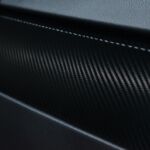The fuel injector nozzle is critical to diesel engine performance and emissions. Various parameters of the injector nozzle, such as the size and geometry of the nozzle hole, significantly impact the combustion characteristics of a diesel engine. It also affects the emissions and performance over the engine’s lifetime.
According to the market database, injector nozzles of all engines must produce a fuel spray that meets the performance and emission goals for the market, regardless of the fuel system design (common rail, unit pump, pump-line-nozzle, and unit injector). Furthermore, the type of fuel system can also influence the requirements for injection nozzles.
3D printing for injector nozzles
The use of 3D printing for manufacturing has grown tremendously over the past decade. Despite some skepticism, NASA, the organization tasked with exploration and research in space is over the moon with 3D printers. NASA has embraced existing technologies and is actively working to advance additive manufacturing through funding, research, and practical application.
The Robotic Deposition Technology (RDT) team is designing and manufacturing innovative and lightweight combustion chambers, nozzles, and injectors that will incorporate automated robotic deposition 3D-printing technologies. The goal is to evolve weight-optimized materials to validate performance and reusability through hot-fire testing.
Recently, the RDT project team tested their lightweight combustion chamber and nozzle through hot-fire and cold spray. The Long Life Additive Manufacturing Assembly (LLAMA) project also provided injectors and carbon composite nozzles for use in these tests. In addition, three different carbon composite nozzles designed for 7,000 pounds of thrust were tested and endured extreme environmental conditions with measured nozzle temperatures of more than 4,000 degrees Fahrenheit.
Argonne Cummins and Convergent for fuel injector dynamics
Researchers at Argonne have teamed up with Cummins and software developer Convergent Science Inc. to develop predictive engine simulations using high-performance computing tools at the laboratory. Together, the three organizations will develop fuel spray models that are more accurate and integrate them into full engine simulations. Cummins has incorporated the fuel spray and combustion modeling work the three organizations have done over the past six years into its internal workflow.
According to the market database, traditional modeling approaches do not accurately reflect the formation of fuel sprays as they emerge from injector nozzles. However, what happens here determines how the fuel is allocated further downstream.
By dynamically coupling models that describe internal flow and spray formation, Argonne and collaborators will endeavor to enhance the ability to model the near-nozzle region. As a result of the advanced approach to modeling fuel sprays, fewer assumptions will be needed for fuel jets formation, and a more predictive model could succeed.
A tool like this would allow manufacturers like Cummins to understand fuel and hardware choices more clearly. Those working to decarbonize transportation through alternative fuels can use this tool to make informed decisions about fuel choice and its impact on injector and engine performance.
Fewer emissions injectors for ships
With shipping increasingly using gas-powered ships with dual-fuel engines onboard, the issue of methane slip contributing to greenhouse gas emissions is likely to gain prominence. A lean-burn engine is outlined by the formation of methane slip caused by incomplete combustion on the cold cylinder walls, surfaces of the combustion chambers, and losses resulting from gas exchanged between the cylinders. Through better fuel injection into the engine, these can be diminished.
With the new injector concept, Woodward L’Orange is developing a versatile system capable of adapting to new fuels and minimizes methane leakage. For pure-gas and dual-fuel engines, these are high-pressure gas direct injectors. In gas or diesel modes, they complement the company’s existing injectors and allow for a precise pilot injection quantity. Both technologies have been successfully introduced to the market by Wärtsilä engines.
In Woodward L’Orange’s dual-fuel injectors, several low-energy liquids and high-pressure gaseous fuels can be injected, including methanol and LPG. Utilizing the more advanced technology for direct gas injection combustion provides several advantages. A diesel pilot ignites the gas at high pressure, causing it to burn heterogeneously, just like typical diesel combustion. Gas is fully converted, and methane slip is diminished to an absolute minimum.
According to the market database, the combustion process also eliminates knocking, so diesel engines can achieve a specific cylinder output. Direct injection without throttling can also deliver high efficiencies and transient responses. Developed for high-speed engines, this injector family can be easily adapted to medium-speed units as well. The injector concept has been proven reliable during hundreds of hours of testing on numerous single-cylinder engines. Its technology allows the power density and dynamic performance that ship operators expect from diesel engines. The injector nozzle market and its 10-year business outlook can be understood using Global Market Database.


